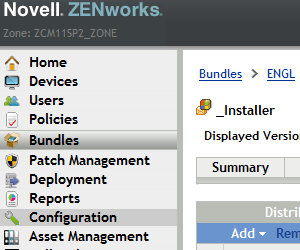At the Open Horizons Summit in April in Budapest I ran two hot-labs about Bundle Commander and the ENGL Imaging Toolkit. In these workshops I discussed the integration of both products. In this article I will discuss this integration in detail.
First of all let me introduce you to the ENGL Imaging Toolkit for those of you who don’t know about this great 3rd party solution. The Imaging Toolkit makes Windows deployment easy for ZENworks. The core of the Imaging Toolkit is the Build Console. This provides the ZENworks administrator a single place to manage and create your Windows deployments.
You can import source media for:
- Windows 7
- Windows 8
- Windows 10
- Windows Server 2012, x86 as well as x64
- the Microsoft .NET Framework
- the ZENworks Agent.
You can also search for, download and then import the Windows device drivers for the hardware you have.
Within an Imaging Toolkit project you can select which components you want to use for your deployment and how they will be used during what’s called the ‘Build Process’. The result of a project is a Windows (sysprep’d) base image as well as a set of add-on images which include the selected components. When you restore these images, Windows mini-setup will run and the build process will configure the machine based on what has been defined in your Imaging Toolkit project.
Using Build Console, projects can be created and managed easily. It validates each project prior to deployment to ensure all media is available and configuration settings are valid. In a project you can configure how a device should be joined to a domain and to which ZCM zone a device should be registered. The end result of a build process is a domain joined device on which your favourite Windows OS is installed, a device which has the correct drivers installed and a device managed by a ZENworks agent which has been registered in your ZCM zone.
That’s cool! You’ve setup a perfect (re)image process which brings you ... Windows. So what is missing?... applications of course!
Adding Applications
(This article was first published in OHM29, p4-20, June 2015). Please SUBSCRIBE if you wish to view the complete article.

